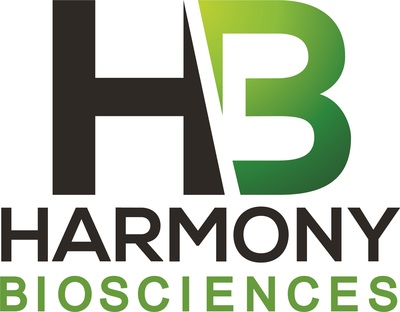Harmony Biosciences Highlights Publication of WAKIX® (pitolisant) Efficacy Data in Sleep Medicine
Harmony Biosciences Holdings, Inc. (Nasdaq: HRMY) announced the publication of a post-hoc analysis of Phase 3 trials of pitolisant (WAKIX) in Sleep Medicine, focusing on patients with high narcolepsy symptom burdens. Results showed significant reductions in excessive daytime sleepiness (EDS) and cataplexy. For patients with high EDS, pitolisant achieved a mean change of –6.1 versus –2.3 for placebo. Moreover, 69% of patients responded positively. The treatment was well-tolerated, with common side effects including headache and nausea.
- Significant efficacy of pitolisant shown in high-burden narcolepsy patients, with a mean ESS score change of -6.1 versus -2.3 for placebo (p<0.001).
- High responder rate for pitolisant group (69%) compared to 35.1% in placebo (p=0.001).
- Data supports ongoing commercialization of WAKIX, which has been available since Q4 2019.
- Adverse events include headache, nausea, and anxiety, which can impact patient compliance.
- Pitolisant may prolong QT interval, posing risks for certain patient populations.
Insights
Analyzing...
PLYMOUTH MEETING, Pa., March 17, 2021 /PRNewswire/ -- Harmony Biosciences Holdings, Inc. ("Harmony") (Nasdaq: HRMY), a pharmaceutical company dedicated to developing and commercializing innovative therapies for patients living with rare neurological disorders who have unmet medical needs, today announced that results of a post-hoc analysis of data from two Phase 3 clinical trials of pitolisant, a histamine 3 (H3) receptor antagonist/inverse agonist, have been published online in Sleep Medicine. The analysis focused on patients in the trials who suffered from a high burden of narcolepsy symptoms, including both excessive daytime sleepiness (EDS) and cataplexy.
The publication, Efficacy of Pitolisant in Patients with High Burden of Narcolepsy Symptoms: Pooled Analysis of Short-Term, Placebo-Controlled Studies reports data pooled from two randomized, placebo-controlled, 7-or 8-week studies in adult patients with narcolepsy, in which pitolisant could be titrated to a maximum dose of 35.6 mg/day. Three independent patient subgroups were analyzed based on the following criteria for high burden of narcolepsy symptoms:
- High burden of EDS as defined by an Epworth Sleepiness Scale (ESS) baseline score ≥16 (n = 118);
- High burden of EDS as defined by a sleep latency ≤8 minutes on a Maintenance of Wakefulness Test (MWT) (n = 105); and,
- High burden of cataplexy as defined by ≥15 cataplexy attacks per week (n = 31).
Change from baseline to the end of treatment was evaluated for pitolisant compared with placebo in each patient subgroup.
The publication reports the following results:
- In the patients with a high burden of EDS as defined by ESS (pitolisant, n=60; placebo, n=58), least-squares mean change from baseline on the ESS was significantly greater for pitolisant (–6.1) compared with placebo (–2.3; p<0.001). In addition, significantly more patients were classified as treatment responders (ESS score reduction ≥3) in the pitolisant group (69 percent) compared with the placebo group (35.1 percent; p=0.001).
- In the patients with a high burden of EDS as defined by the MWT (pitolisant, n=59; placebo, n=46), increase in mean sleep latency on the MWT was significantly greater for pitolisant (6.9 minutes) compared with placebo (3.4 minutes; p=0.017).
- In the patients with a high burden of cataplexy (pitolisant, n=20; placebo, n=11), least-squares mean change in the weekly rate of cataplexy was significantly greater for pitolisant (–14.5; baseline, 23.9; final, 9.4) compared with placebo (–0.1; baseline, 23.1; final, 23.0; p=0.004).
- The adverse event profile from this analysis was consistent with the known safety profile for pitolisant; headache, nausea, and anxiety were the most common adverse events in pitolisant-treated patients.
"Narcolepsy is a chronic, debilitating neurological disorder characterized by sleep-wake state instability that can disrupt daily functioning, especially in patients who experience a high symptom burden," said Harmony's Chief Medical Officer, Jeffrey Dayno, M.D. "The findings reported in this publication highlight that WAKIX® (pitolisant) was efficacious for reducing the symptom burden for both EDS and cataplexy, even in patients with a high burden of the two most common symptoms in narcolepsy."
Pitolisant is marketed as WAKIX in the U.S. for the treatment of EDS or cataplexy in adult patients with narcolepsy.
About WAKIX® (pitolisant) Tablets
WAKIX, a first-in-class medication, is approved by the U.S. Food and Drug Administration for the treatment of excessive daytime sleepiness or cataplexy in adult patients with narcolepsy. WAKIX has been commercially available in the U.S. since Q4 2019. It was granted orphan drug designation for the treatment of narcolepsy in 2010. WAKIX is a selective histamine 3 (H3) receptor antagonist/inverse agonist. The mechanism of action of WAKIX is unclear; however, its efficacy could be mediated through its activity at H3 receptors, thereby increasing the synthesis and release of histamine, a wake promoting neurotransmitter. WAKIX was designed and developed by Bioprojet (France). Harmony has an exclusive license from Bioprojet to develop, manufacture and commercialize pitolisant in the United States.
Important Safety Information
WAKIX is contraindicated in patients with known hypersensitivity to pitolisant or any component of the formulation and in patients with severe hepatic impairment. WAKIX is extensively metabolized by the liver and there is a significant increase in WAKIX exposure in patients with moderate impairment.
WAKIX prolongs the QT interval. Avoid use of WAKIX in patients with known QT prolongation or in combination with other drugs known to prolong the QT interval. Avoid use of WAKIX in patients with a history of cardiac arrhythmias, as well as other circumstances that may increase the risk of the occurrence of torsade de pointes or sudden death, including symptomatic bradycardia, hypokalemia or hypomagnesemia, and the presence of congenital prolongation of the QT interval.
The risk of QT prolongation may be greater in patients with hepatic or renal impairment due to higher concentrations of pitolisant; monitor these patients for increased QTc. Dosage modification is recommended in patients with moderate hepatic impairment and moderate or severe renal impairment. WAKIX is not recommended in patients with end-stage renal disease (ESRD).
In the placebo-controlled clinical trials conducted in patients with narcolepsy with or without cataplexy, the most common adverse reactions (≥
Please see the Full Prescribing Information for WAKIX for more information.
About Narcolepsy
Narcolepsy is a rare, chronic, debilitating neurologic disorder of sleep-wake state instability that impacts approximately 165,000 Americans and is primarily characterized by excessive daytime sleepiness (EDS) and cataplexy – its two cardinal symptoms – along with other manifestations of REM sleep dysregulation, which intrude into wakefulness. EDS is the inability to stay awake and alert during the day and is the symptom that is present in all people living with narcolepsy. In most patients, narcolepsy is caused by the loss of hypocretin, a neuropeptide in the brain that supports sleep-wake state stability. This disorder affects men and women equally, with typical symptom onset in adolescence or young adulthood; however, it can take up to a decade to be properly diagnosed.
About Harmony Biosciences
Harmony Biosciences is a pharmaceutical company headquartered in Plymouth Meeting, PA. The company was established by Paragon Biosciences, LLC, with a vision to provide novel treatment options for people living with rare, neurological disorders who have unmet medical needs. For more information on Harmony Biosciences, please visit the company's website: www.harmonybiosciences.com.
Forward Looking Statement
This press release contains forward-looking statements within the meaning of the Private Securities Litigation Reform Act of 1995. All statements contained in this press release that do not relate to matters of historical fact should be considered forward-looking statements, including statements regarding our product WAKIX®. These statements are neither promises nor guarantees, but involve known and unknown risks, uncertainties and other important factors that may cause our actual results, performance or achievements to be materially different from any future results, performance or achievements expressed or implied by the forward-looking statements, including, but not limited to, the following: our commercialization efforts and strategy for WAKIX®; the rate and degree of market acceptance and clinical utility of WAKIX®, pitolisant in additional indications, if approved, and any other product candidates we may develop or acquire, if approved; our research and development plans, including our plans to explore the therapeutic potential of pitolisant in additional indications; our ongoing and planned clinical trials; our ability to expand the scope of our license agreement with Bioprojet; the availability of favorable insurance coverage and reimbursement for WAKIX®; the impact of the COVID-19 pandemic; the timing of and our ability to obtain regulatory approvals for pitolisant for other indications as well as any other product candidates; our estimates regarding expenses, future revenue, capital requirements and needs for additional financing; our ability to identify additional products or product candidates with significant commercial potential that are consistent with our commercial objectives; our commercialization, marketing and manufacturing capabilities and strategy; significant competition in our industry; our intellectual property position; loss or retirement of key members of management; failure to successfully execute our growth strategy, including any delays in our planned future growth; our failure to maintain effective internal controls; the impact of government laws and regulations; volatility and fluctuations in the price of our common stock; and the significant costs and required management time as a result of operating as a public company; the fact that the price of the company's common stock may be volatile and fluctuate substantially; significant costs and required management time as a result of operating as a public company. These and other important factors discussed under the caption "Risk Factors" in our Quarterly Report on Form 10-Q filed with the Securities and Exchange Commission (the "SEC") on November 12, 2020, and our other filings with the SEC could cause actual results to differ materially from those indicated by the forward-looking statements made in this press release. Any such forward-looking statements represent management's estimates as of the date of this press release. While we may elect to update such forward-looking statements at some point in the future, we disclaim any obligation to do so, even if subsequent events cause our views to change.
Harmony Biosciences Media Contact:
Nancy Leone
215-891-6046
nleone@harmonybiosciences.com
Harmony Biosciences Investor Contact:
Lisa Caperelli
610-608-0215
lcaperelli@harmonybiosciences.com
![]() View original content to download multimedia:http://www.prnewswire.com/news-releases/harmony-biosciences-highlights-publication-of-wakix-pitolisant-efficacy-data-in-sleep-medicine-301248750.html
View original content to download multimedia:http://www.prnewswire.com/news-releases/harmony-biosciences-highlights-publication-of-wakix-pitolisant-efficacy-data-in-sleep-medicine-301248750.html
SOURCE Harmony Biosciences








